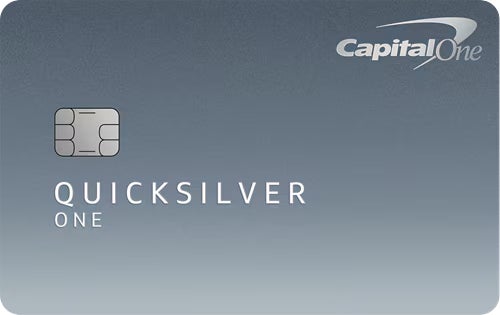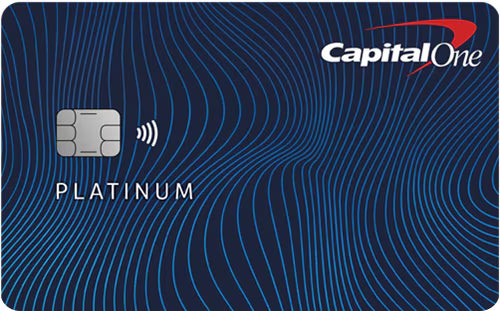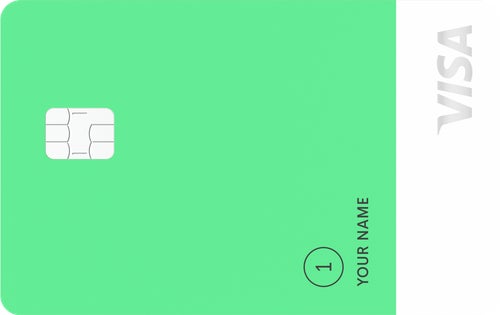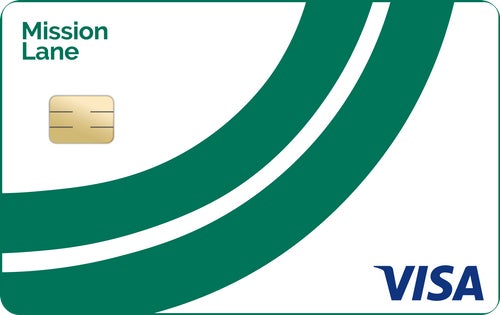| Credit Building Rating: | 3.4 / 5 |
| Cost of Membership | 3.0 |
| Ease of Building Credit | 3.0 |
| APR | 1.0 |
| Features | 3.8 |
In a Nutshell:
The Mission Lane Visa card carries a lower cost than most unsecured cards for people with bad credit, so it could make sense if you want to build credit but can’t afford to tie up hundreds in a security deposit.
Average cost of membership per year ($3,600 annual spend) |  |
Security deposit required |  |
Credit limit |  |
Access to higher credit line? |  |
APR |  |
Annual fee |  |
Other rates and fees
|  |
Other notable features: Instant approval decision, free online credit education, auto rental insurance, zero liability fraud coverage
Though it’s far from the best credit-building card out there, the Mission Lane Visa Credit Card could be a decent fit if you’re looking for a chance to build or rebuild credit without tying up money in a security deposit.
Since this unsecured credit card is available even with bad credit or no credit history, charges a relatively low fee – or, if you qualify, no fee at all – and reports to all three credit bureaus, it can certainly get the job done as a temporary stopgap for credit-builders who want to work on their score and eventually move on to a card with even better terms.
That said, the card falls short of many secured credit cards due to its potential for a decent-sized annual fee and very high ongoing APR range. And if you have at least fair or average credit, you should be able to find an unsecured card that carries a lower cost of membership, offers cash back rewards or both.
Resources: How to pick the best credit card for you
Why you might want the Mission Lane Visa card
The Mission Lane Visa’s relatively low cost compared to other unsecured credit-building cards and its low entry barrier stand out. While the card is nothing flashy, it can help you get the job done if your priority is building credit. Since the Mission Lane Visa carries no activation or monthly maintenance fees, and your annual fee won’t go up after your first year, as is the case with many cards in this niche, it’s a good card to have in your wallet if you’re looking to phase out of bad credit.
Straightforward credit-building
The Mission Lane Visa reports to all three credit bureaus, so if you pay on time and avoid maxing out your card, you should build credit over time.
One plus for cash-strapped credit-builders is that the Mission Lane Visa is an unsecured credit card, which means you won’t have to put down a cash deposit to get started. Secured credit cards, in contrast, typically require you to tie up $200 or more in a security deposit when you open an account. Though this deposit is refundable when you close the account or “graduate” to an unsecured card, it can be a deal-breaker if you can’t afford to set aside a chunk of money for six months or more just to build credit.
Having no deposit requirement makes the Mission Lane Visa more accessible for more credit-builders, so our credit-building card rating methodology gives it extra points in the “ease of building credit” category.
However, secured cards can offer more flexibility when it comes to your credit limit, which could help fast-track your credit-building efforts. That’s because credit utilization – the amount of credit you’re using compared to your total available credit – makes up a whopping 30% of your FICO credit score. Since the deposit on secured cards typically doubles as your credit limit, you can put down a large deposit and get a high limit on many secured cards. A higher credit limit can make it easier to keep your credit utilization low, and the lower your utilization, the better your score.
Whereas some secured cards let you put down $2,000 or more and get a matching credit limit, the Mission Lane Visa features a minimum starting credit limit of just $300. While this is a pretty standard starting limit for an unsecured credit-building card, it’s worth keeping in mind since such a low limit means that carrying even a small balance could spike your credit utilization ratio. For example, if you had a $300 credit limit and the Mission Lane was your only card, a single $100 charge would put you over 30% credit utilization (a common rule of thumb is to keep your utilization below 30% to avoid hurting your score).
Fortunately, the issuer will periodically review your account to see if you’re eligible for credit line increases, starting after seven months of card membership.
Tip: Even if you’re set on avoiding a security deposit, the Capital One Platinum Secured Credit Card is worth a look. It only requires a $49 refundable deposit but gives you a minimum starting limit of $200. Depending on your financial situation and credit-building strategy, this could be a better deal than the Mission Lane Visa card’s up to $59 annual fee and $300 starting limit.
Resources: How a secured card helped my score
Relatively low annual fee for an unsecured card
Compared to unsecured credit-building cards like the Credit One Bank® Platinum Visa® for Rebuilding Credit*, which carries a $75 annual fee in your first year (after that $99 annually, billed at $8.25 per month) and the Milestone Mastercard® – $1,000 Credit Limit, which carries an annual fee as high as See Terms, the Mission Lane Visa is considered a good deal when its annual fee is set at a maximum of $59.
Although the Mission Lane Visa card’s annual fee is far from the highest you’ll find on an unsecured credit-building card, it’s still pricey and unnecessary if your main goal is building credit. Depending on your credit, this could land between $0 and $59 if you apply through CreditCards.com and are approved; note, however, that it could run as high as $75 if you apply another way.
Applying for a secured card could be a better option because there’s a chance you could get your deposit back when you close or upgrade your card account. A secured card will almost certainly be a more affordable way to build credit with a credit card – many charge no annual fee and let you put down a refundable deposit as low as $100.
Fair approval odds
The Mission Lane Visa is designed for cardholders who need to build or rebuild their credit, so you should have a decent chance at qualifying even with a bad credit score (a FICO score below 580). If you have fair or average credit or limited credit history, your odds may be even better.
The card’s issuer also offers a soft pull prequalifcation tool on its website, which should give you a bit more peace of mind before you submit a formal application. You can also use the CreditCards.com CardMatch tool to see if you’re matched with the Mission Lane Visa based on your credit profile. This has no impact on your credit score and should give you a better sense of your odds of approval.
Plus, when you apply for the Mission Lane Visa, the issuer promises an instant approval decision, so you won’t need to spend weeks waiting to see if you’re approved.
Why might want another card
While it’s one of the better unsecured credit-building options, the Mission Lane Visa card comes up short in a few areas. The card only offers limited benefits and if earning rewards and building credit at the same time are your goals, it may be better to investigate another card. Here’s a recap of some of the major drawbacks to keep in mind:
Could be costly if you carry a balance
The Mission Lane Visa’s interest rate is much higher than the industry average and is high even for a card in the credit-building category. If you have any doubt about your ability to pay off your balance in full each month or if you are looking for a long-term financing tool, the Mission Lane Visa will be a poor choice.
The card could also end up costing you if you carry a balance or struggle to meet the monthly deadline for your minimum payment. If you fail to pay off your balance in full, you’ll face a 26.99% to 29.99% variable APR, regardless of your credit score. This rate eclipses the average credit card APR and is high even compared to many other cards designed for someone with a damaged credit score.
There is also a late payment fee of up to $35 with the Mission Lane Visa. While that’s not the highest you’ll find (many cards charge up to $40 for each slipup, the maximum late fee allowed by law), it can add up quickly if you regularly struggle to pay your balance on time. Luckily, the card doesn’t impose a penalty APR.
Other fees to watch out for with the Mission Lane Visa include a cash advance fee of 3% (minimum $10) and a 3% foreign transaction fee, which makes the card a poor choice for frequent international travelers.
No rewards program
The Mission Lane Visa doesn’t offer a welcome bonus or any rewards on your spending. While these are not common among credit-building cards, they’re not unheard of either. A handful of credit-building cards – both secured and unsecured – offer cash back programs that can help you save on everyday spending and offset some of your card’s cost.
An alternative could be the unsecured card that earns some cash back rewards is the Credit One Bank Platinum Visa for Rebuilding Credit if you wanted a rewards program. Cardholders can earn 1% cash back on eligible spending such as gas, grocery purchases and mobile phone, internet, cable and satellite TV services (terms apply). However, you would have the $75 annual fee to fork over for the first year, after that $99 annually ($8.25 per month). A card like this requires some sacrifice if you want to earn some rewards while building your credit.
Limited card benefits
Considering the Mission Lane Visa card is geared toward people working on their credit score, it’s no surprise that the card doesn’t carry many extra benefits. However, the few perks the card carries may offer some small everyday value and can be useful if you’re trying to keep tabs on your credit profile overall. Here are a few highlights:
- Free credit education tools – Cardholders get free access to their credit score as well as educational resources to help them build better credit that lasts.
- Auto rental insurance – You’ll get an auto rental collision damage waiver that covers you against damage due to collision or theft when you rent a car with the card.
- Mobile app access – You can easily track your spending, check your credit score and credit utilization and make card payments through the Mission Lane mobile app.
- Get a chance to build credit – Your balance and payments will be reported to the three credit bureaus – Experian, Equifax and TransUnion – so you should see your score improve if you use your card responsibly.
- Chance at higher credit limits over time – The issuer promises to automatically review your account after seven months to see if you’re eligible for a credit line increase. Some competing cards either don’t offer credit line increases or have no clear timeline for getting a credit line increase.
How does the Mission Lane Visa card compare to other credit-building cards?
While the Mission Lane Visa may make sense for cardholders with bad credit who want to work on their score and avoid a deposit, you may be able to find a lower-cost option, especially if you have at least fair credit (or limited credit history). Here are some alternatives to consider:
 |  |  |
Rewards rate
| Rewards rate
| Rewards rate
|
Credit limit
| Credit limit
| Credit limit
|
| Annual fee $39 | Annual fee $0 | Annual fee $0 |
Other things to know
| Other things to know
| Other things to know
|
Capital One QuicksilverOne Cash Rewards Credit Card
If you have fair credit or higher (a credit score of 580-plus), the Capital One QuicksilverOne card is a great option. Indeed, this cash back credit-building card beats out the Mission Lane Visa in nearly every category. Not only does it charge an annual fee of just $39 (versus up to $59 with the Mission Lane Visa card), but it also offers unlimited 1.5% cash back on every purchase, which will help offset the card’s cost even further. Plus, once your score improves, you may be able to upgrade to a more lucrative rewards or cash back card from Capital One.
Capital One Platinum Credit Card
If you want to avoid an annual fee and have at least fair credit, the Capital One Platinum card is one of our top picks. It’s far from the flashiest card, offering next to nothing in the way of perks, but it carries a $0 annual fee, requires no security deposit and gives you a chance at a credit limit increase after six months of on-time payments. If building credit is your top priority, it’s hard to go wrong with this streamlined card.
Petal® 1 "No Annual Fee" Visa® Credit Card
The Petal 1 card is a terrific option for credit-builders since it’s available even with limited credit, charges no annual fee and offers a minimum starting credit limit of $300. The card is also notable for its flexible approvals process: The issuer can consider more than just your credit score when you apply and may take into account other financial data like your bill payment history. This will be a big help if you’ve had some credit missteps in the past but are otherwise on solid financial ground.
How to use the Mission Lane Visa card
- Use your card for small purchases to keep your credit utilization low and ensure you can pay off your balance each month.
- Pay your credit card balance in full every month to avoid the high APR on purchases.
- Monitor your credit score and progress with the Mission Lane mobile app.
Is the Mission Lane Visa card worth it?
The Mission Lane Visa card probably isn’t your best credit-building option (a secured card will almost certainly be a better deal), but the card’s relatively low fees beat out those of the average unsecured credit-building card. This means if you have bad credit and are set on avoiding a security deposit, the Mission Lane Visa is worth a look.
If, on the other hand, you have at least fair or average credit or don’t mind tying up money in a security deposit, the Mission Lane Visa isn’t worth an application.
*All information about the Credit One Bank Platinum Visa for Rebuilding Credit card has been collected independently by CreditCards.com. The issuer did not provide the content, nor is it responsible for its accuracy.
All reviews are prepared by CreditCards.com staff. Opinions expressed therein are solely those of the reviewer and have not been reviewed or approved by any advertiser. The information, including card rates and fees, presented in the review is accurate as of the date of the review. Check the data at the top of this page and the bank’s website for the most current information.
Responses to comments in the discussion section below are not provided, reviewed, approved, endorsed or commissioned by our financial partners. It is not our partner’s responsibility to ensure all posts or questions are answered.
